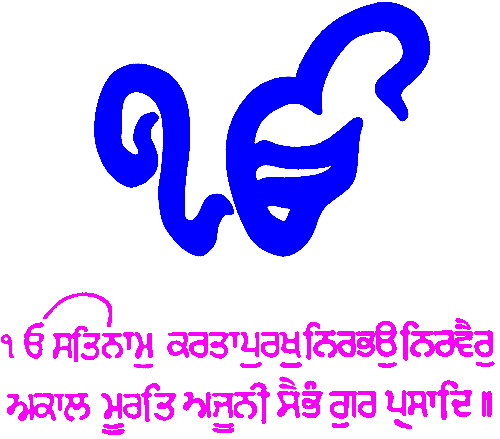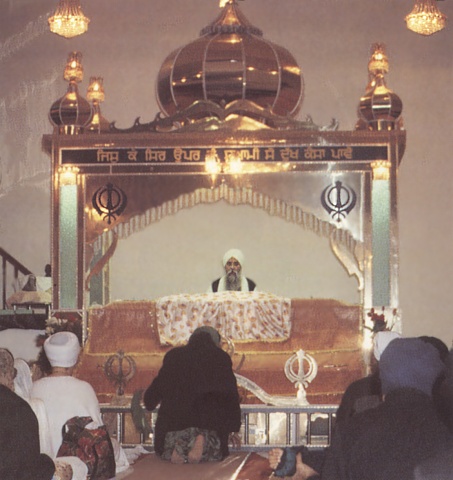|
When Guru Nanak was told by a Muslim his feet facing Makkah was an insult to God he asked where he could put his feet so that they were not facing God.
|
|
The faith comes from the Punjab region which itself was a crossroads of influences, trade and ethnic peoples with the Khyber Pass prominent. Its centre is Amritsar with the Sikh Golden Temple, around which is the Amrita Saras, the pool of immortality, which allows ritual purification.
|
|
Also India was divided by castes, sectarianism, factions and fanaticism and so Guru Nanak rejected any existing religion whilst respecting all religions, believing that there were many roads to God who is Truth. Today there is some stress on developing the Sikh nation, a people and their home Khalistan through personal and collective growth. It is possible of course for Sikhs themselves to be factional today in the context of India, but the emphasis of the faith is on good civic living.
|
|
A Sikh prayer is sarbat da bhala, meaning welfare for all. So unlike emphases within Hinduism regarding individual withdrawal, Sikhism emphasises activity (though a kind involving the reduction of the ego).
|
|
Equality is important. The gurus protested against inequality because humankind was a manifestation of God. The same divine element is in every human being.
|
|
There is an emphasis against ritual (though there is ritual, of course) and towards the practical, which can include scriptural readings.
|
 Sikhism (of which there are now around 23 million followers) is a faith of a specific syncretistic background although with its own distinctive and reforming content. It has Islamic (Sufi especially, and Sunni political power) and Hindu (Vishnaites, Shaivites - with Buddhist echoes) origins. This particularly comes with Kabir's writings (1440-1518) who was a mystical writer of a mixed Hindu and Muslim family, and used both faiths, and much of what he wrote was included in the Guru Granth Sahib, as are other Muslim and Hindu writers. However, it is a faith of essentials, rejecting both Hindu and Muslim superstition whilst at the same time inclusive of non-Sikh faithful callings of God. The centre of the faith is the Guru Granth Sahib, compiled by the first six Gurus and the last human Guru. It facilitates the meditation on the divine name, being the sufficient transmission of the truth of God, and gives full contentment. The name of God is the nectar or sweetness that gives emancipation.
Sikhism (of which there are now around 23 million followers) is a faith of a specific syncretistic background although with its own distinctive and reforming content. It has Islamic (Sufi especially, and Sunni political power) and Hindu (Vishnaites, Shaivites - with Buddhist echoes) origins. This particularly comes with Kabir's writings (1440-1518) who was a mystical writer of a mixed Hindu and Muslim family, and used both faiths, and much of what he wrote was included in the Guru Granth Sahib, as are other Muslim and Hindu writers. However, it is a faith of essentials, rejecting both Hindu and Muslim superstition whilst at the same time inclusive of non-Sikh faithful callings of God. The centre of the faith is the Guru Granth Sahib, compiled by the first six Gurus and the last human Guru. It facilitates the meditation on the divine name, being the sufficient transmission of the truth of God, and gives full contentment. The name of God is the nectar or sweetness that gives emancipation.

